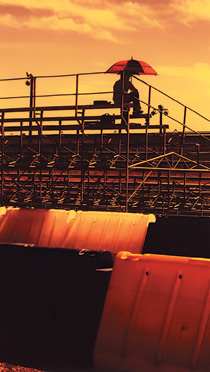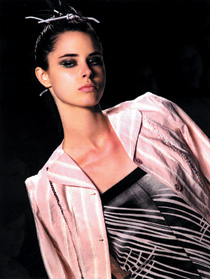Canon's i9900 Photo Printer
Let's leave the suspense to Alfred Hitchcock: Canon's i9900 Photo Printer is the best desktop ink jet printer in its price range that I've ever used. The i9900 makes big, beautiful prints, is quiet, offers fast cross-platform interconnectivity, and did I mention it makes beautiful prints?

Hi Rez!
The i9900 Photo Printer features Canon's MicroFine Droplet Technology
that uses a high-density print head containing 6144 nozzles that deliver approximately
11 million two-picoliter droplets per square inch, achieving an output resolution
up to 4800x2400dpi. Stress-free borderless 4x6" photos can be printed
in about 38 seconds with letter-sized output in about 50 noiseless seconds.
The i9900 supports edge-to-edge borderless prints in 5x7, 8.5x11, and 13x19"
sizes and does it so quietly I often had to look to see if the i9900 was, indeed,
printing.
Performance is enhanced with both FireWire and USB 2.0 Hi-Speed interface for
fast data transfers. A conventional USB interface is also included, allowing
up to three computers to be connected to the printer simultaneously. Direct
photo printing is possible without using a computer at all thanks to the built-in
PictBridge support. PictBridge is an industry standard for digital printers,
cameras, and camcorders that allows direct printing, without a computer, from
compatible devices to any compatible printer, regardless of manufacturer.
 |
|
|
Eight Colors Of The Rainbow
The i9900 Photo Printer has eight individual ink tanks. Canon's ChromaPLUS
eight-color ink system adds red and green ink tanks to the usual mix of cyan,
magenta, yellow, black, photo cyan, and photo magenta inks commonly found on
six-color printers. The red ink tank provides a 60 percent increase in the orange/red
gamut over six-color printing and delivers for improved orange hues as well
as richer reds. When compared to six-color printing, the green ink increases
the green gamut by 30 percent and creates more accurate, deeper greens for grass
and foliage. Canon claims the finished print more closely matches "the
color characteristics of positive photographic film" and output, especially
on Canon's glossy media, is spectacular.
So what does all this ink cost? To replace all of the cartridges at the same
time, something that the very concept of the individual cartridges is supposed
to defeat, it should be somewhere south of $80, but based on my
real-world testing the two-picoliter ink droplets seem to be miserly and ink
consumption seems modest when printing on all types of media.
 |
 |
||
|
|
- Log in or register to post comments

































